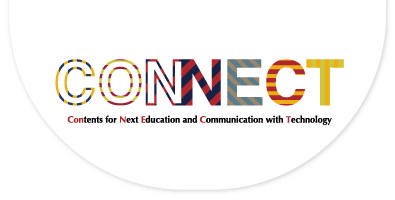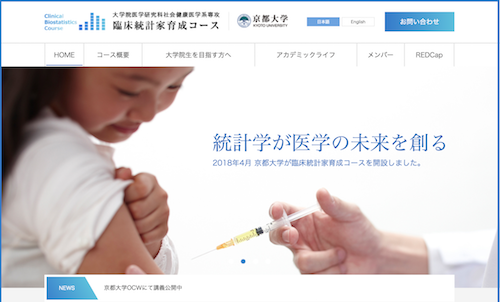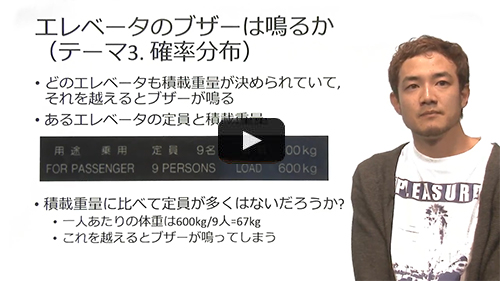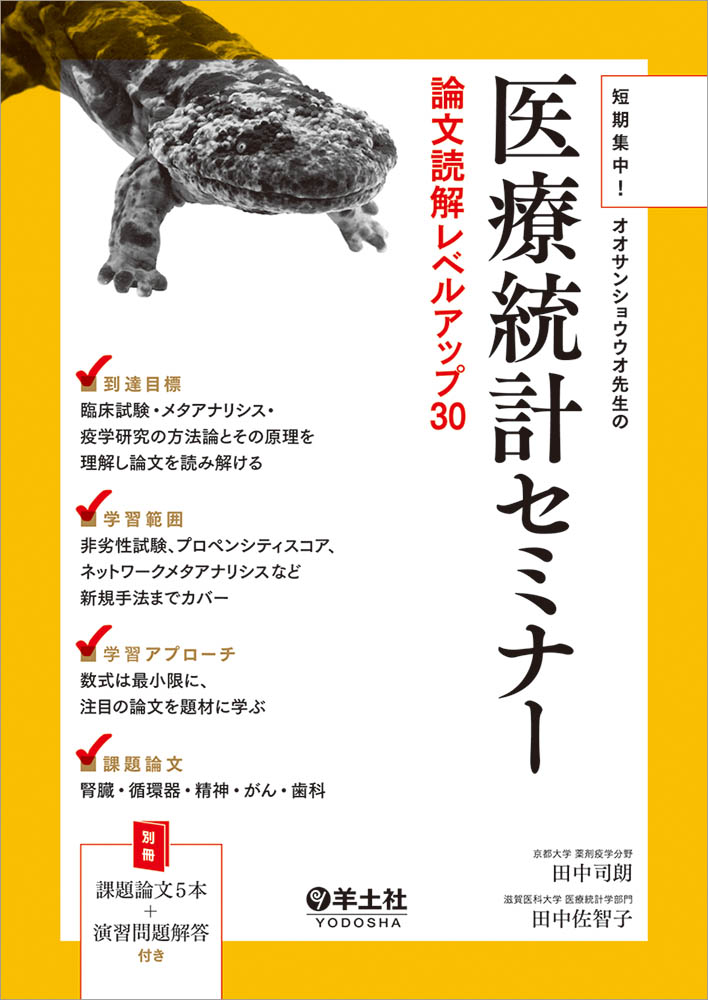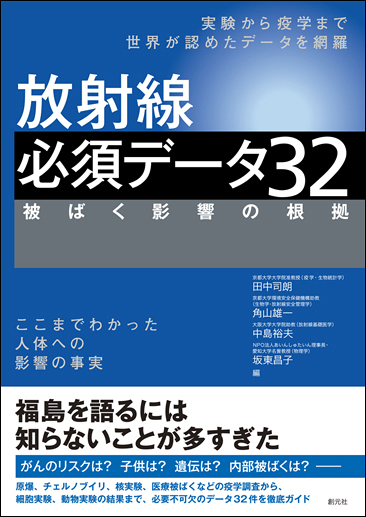TopicsTeacher Interview

Statistics Education from Training Professionals to Public Outreach:
Strengthening Civic Literacy
Program-Specific Professor Shiro Tanaka, Graduate School of Medicine, Kyoto University
Dr. Tanaka has provided a series of online courses including "At What Percentage Would Elevators Buzz? - Introduction to Statistics for University Students" and "Audit Course: Biostatistics for Clinical Researchers" both on OCW*, and "Dr. Giant Salamander's Seminar on Medical Statistics - Clinical Trials, Meta-Analysis, and Epidemiology Research" on KoALA**. In this exclusive interview, Dr. Tanaka shares an array of stories including behind-the-scenes episodes, insights from creating online course series on OCW and KoALA, and his prospects of statistics education.
*OCW (OpenCourseWare): A web-based publication of course materials: lecture videos, handouts, syllabus, quizzes, etc. of regular courses, open lectures, and international symposiums. For further details, please see here.
**KoALA (Kyoto University Online for Augmented Learning Activities): Kyoto University's online learning platform, providing online lectures, course materials, and online learning experiences. For further details, please see here.
- Profile
- Currently Program-Specific Professor of Clinical Biostatistics, Graduate School of Medicine, Kyoto University. Ph.D. in Biostatistics.
Program-Specific Assistant Professor, Kyoto University Hospital; Program-Specific Lecturer at Graduate School of Medicine, Kyoto University; Program-Specific Professor since February 2017. Actively involved in a number of clinical trials and epidemiological studies. Certified as a senior trial statistician by the Biometric Society of Japan. Recipient of the Best Teachers Award 2015 in recognition of his outstanding teaching efforts demonstrated through graduate-level courses "Clinical Trial" and "Statistical Methods in Clinical Trials" at Kyoto University School of Public Health. On top of the graduate-level courses, his profession extends to teaching ILAS Seminars (Liberal Arts and Sciences courses).
OCW & KoALA: For Training Specialists in Clinical Research and Statistics
Could you start by telling us the background of providing the OCW, "At What Percentage Would Elevators Buzz? - Introduction to Statistics for University Students"?
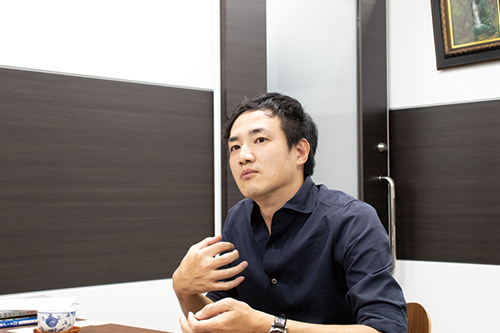
There are two major reasons that persuaded me to initiate the course. One of my goals is to reinforce the backbones of statistics and data science education. Students of any disciplines are, more or less, subject to learn the basics of statistics in due course, so I think it would be most ideal if every one of us has the base knowledge of statistics.
In reality, however, students are rarely exposed to learning statistics at school. School curriculum guidelines for junior and high schools do not have covered statistics, though recent guidelines are gradually being revised. It has triggered a negative chain, as in university undergraduate-level statistics courses, apparently, a majority of students are new to statistics or find it hard to catch up with the classes.
Drawing from my expertise in statistics and data science education, I had this motivation to promote the field of statistics even to high schoolers and university students of liberal arts majors. Incidentally, I learned about OCW on the internet, which convinced me to provide "Introduction to Statistics for University Students" to broadly hook students' genuine interests.
My other goal is to advertise the "Clinical Biostatistics Course" which was newly set up in April 2018 inside Kyoto University School of Public Health.*
"Clinical biostatisticians" are professionals who specify study design and perform statistical analysis in clinical trials, which are essential for new drug development and treatment improvements. They are also termed as "biostatisticians." High-quality research in clinical trials requires close and continuous collaborations with highly professional statisticians.
In Japan, "Clinical Biostatistics" is a newly emerging field, thus the total count of clinical biostatisticians is still small. The Clinical Biostatistics Course is designed to train future clinical biostatisticians through a 2-year professional degree program. Upon successful completion of the program, students will receive a Master of Public Health (MPH), an internationally recognized professional degree.
Do other universities have programs of this kind?
Not so many. Take Kyoto University for example, our grant proposal to the Biostatistician Development and Support Initiative under the scheme of Japan Agency for Medical Research and Development (AMED) was funded, and the initiative supported us with the official launch of the Clinical Biostatistics Course. The initiative also funded the University of Tokyo for implementing their proposal.
One potential pitfall was that not so many students would dare to enroll Graduate School of Medicine with an intention to study statistics. So for the first year, we took a tactic approach in advertising the course broadly through OCW, KoALA, as well as Twitter, Facebook, and other services to call for applications. We imagined the worst case scenario where not even a single person applied, but on the contrary to our anticipation, the actual number of applicants for the entrance examinations of last academic year was double the number of admission quota.
The current total number of clinical biostatisticians is significantly small as opposed to the growing need for such specialists in social settings. I will stay focused on my goals and try to design course activities while seeking to expand the social awareness of clinical biostatisticians and their expected roles.
OCW, "At What Percentage Would Elevators Buzz? - Introduction to Statistics for University Students"
*For outlines of the Clinical Biostatistics Course and stories leading up to the official launch of the course, please read the following journal article:
Shiro Tanaka, Rei Aida, Takumi Imai, Seiko Hirota, Satoshi Morita, Toshimitsu Hamasaki, Toshiya Sato. 2018. Cultivation of Clinical Biostatisticians, Proceedings of the Institute of Statistical Mathematics, 66, 49-62.
Customized Educational Approaches for Students Needs and Goals
What inspired you to create "Dr. Giant Salamander's Seminar on Medical Statistics - Clinical Trials, Meta-Analysis, and Epidemiology Research" on KoALA?
Initially, one of the faculty members from the Center for the Promotion of Excellence in Higher Education, Kyoto University, approached me and introduced this newly launched online learning platform named KoALA to me. Out of curiosity, I decided to give it a try and designed my course based on this book "Intensive Course - Dr. Giant Salamander's Seminar on Medical Statistics: 30 Tips on Reading Medical Science Articles" that I had published as a medical statistics textbook earlier.
The book was published originally as a guide for clinical researchers and health professionals, and is used as a textbook in graduate school. The book picks up some original research articles that showcase the results of clinical trials testing commercially available drugs. It also illustrates the statistical approaches taken in these trials, with pieces of practical and insightful advice to the readers.
In a sense, OCW is for university students in general, whereas KoALA is for researchers and health professionals whose professions require some understanding of medical statistic.
You used different teaching platforms depending on your target audience. Did you find any key difference between OCW and KoALA?
Of course. Teaching statistics, in general, requires a flexible and dynamic approach. Depending on the contents and objectives of each course, different types of knowledge and methodologies are presented. For instance, the statistical methods used for research and analysis in liberal arts fields differ immensely from those used in medical research and clinical trials. Applications of statistics are so diverse that statistics education should be well planned and customized to fit the students' needs and goals to the extent possible.
Paying close attention to these categorical gaps, our team started shooting video clips and preparing handouts for the OCW with a hypothetical scenario that the students taking this course would be university students who did not learn the basics of statistics in high school.
OCW does not require students to complete a registration or submit homework, so anyone can casually take available courses at his or her own pace. By this token, the OCW platform is suited for elementary-level courses, also for lectures and seminars that cover general topics including cutting-edge research.
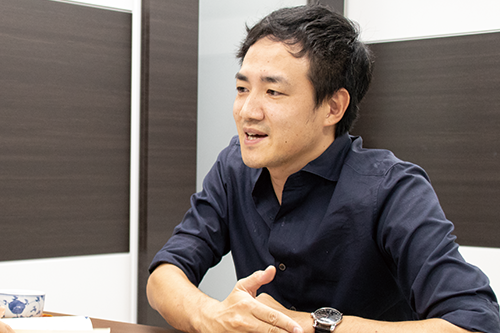
Meanwhile, our target audience on KoALA was highly professional people with specific goals, like reading scientific journals and analyzing data, in mind. To meet their individual needs, the course contents should be attuned to a certain level or even higher. Moreover, the KoALA platform has built-in functions to give homework assignments and to issue a certificate of completion.
In the planning phase, I decided to accommodate the certificate-earning mode* to my course. By doing so, I was able to clarify the overall picture and specific targets at an early stage of designing the course. In my view, KoALA is intended more for a goal-oriented audience, and this advanced platform can be best leveraged for teaching what the audience is expected to master. Because of this nature, if an instructor has published his/her own textbook before, it could save their efforts toward creating an online course to a great extent.
* In the KoALA platform, there are several uploading options available, e.g. just lecture videos, or quizzes only. As for incorporating the certificate, please contact the production crew. For further details, please see here.
From the standpoint of customizing educational approaches toward individual needs, KoALA comes in handy as you could optimize lecture videos and quizzes as you wish, and at the end of the day, you will eventually have to do so out of necessity.
That's true. I see that the customizable aspect explains why various types of lectures are available on KoALA and other MOOCs now.
Data shows that a number of working doctors enrolled in your course on KoALA this time. What's your reaction to the data?
Most of the learners of my KoALA course are health professionals, including Kyoto University graduates. I am quite satisfied with what the course offers, as it has impacted current students, graduates, and even their acquaintances.
A majority of doctors are highly motivated to review their practice on a regular basis while always trying to learn something new, as their profession requires them to look out for up-to-date information constantly. In reality, however, once you graduate from school and start working, regardless of your profession, you will rarely have a chance to study something new. In this sense, my KoALA course was successful in offering such highly-motivated learners with review materials and opportunities for learning something beyond the scope of their expertise. As my course covers a broad range of topics, it was interpreted as a lifelong education, or a remedial education as what they call it nowadays.
Strengthening Civic Literacy
As well as providing courses at undergraduate, graduate, and professional levels, a part of your statistics education effort goes to the lay public at large. Could you give us specific examples of what you do?
Sure. To start with, I had my book titled "Radiation - 32 Essential Data" published in 2016.
The book is intended for those readers who are interested in learning the general effect of radiation. So the book is comprised of chapters elaborating the mechanism of radiation-induced mutation and giving insights into research data. It even extends to explaining the cause-and-effect logic between radiation and diseases, and potential risks of radiation exposure to people who are susceptible to radiation, such as children, expecting mothers and their unborn children.
What prompted me to write this book was the 2011 Tohoku earthquake and tsunami, and the Fukushima Daiichi Nuclear Power Plant disaster that subsequently happened after the earthquake. Back then, our major concern was the unknown risks of radiation exposure to human bodies. To measure such potential risks precisely, certain knowledge of statistics is a minimum requirement. Without sufficient knowledge of statistics, it would be impossible even to foresee how impactful the potential threats might be. The same applies to our everyday lives as well. Decent knowledge of statistical methodologies would bring benefit to us in such a way that it encourages us to think rationally and have a personal view on national policy. Such knowledge would also enlighten us with how to deal with health issues.
One major drawback I found while editing the course contents was that analyzing data was not an easy task for non-professionals. No matter how hard I tried to present essential elements in a plain manner so that beginners can easily follow, after all, learning statistics cannot be done without a certain level of prerequisite knowledge base. That was one of the common feedback items we heard.
So learning throughout compulsory education, high school and university is impotant for acquiring such knowledge, isn't it?
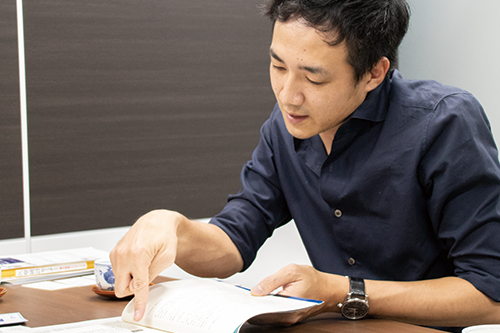
That's right, but under the current compulsory education system, students never have the chance to learn the basics of statistics per se, which is essential for interpreting data in a proper way. In such cases where social issues may arise, having a stable base knowledge of statistics and judgmental skills would surely pay off, which prevents the lay public from going panicking. I am sure that part of such rational prediction skills can be trained through education.
What data implies is really meaningful, thereby one of my teaching goals is to train my students to be equipped with basic skills so that they can interpret data in a scientific manner. This strategy would save my students from getting lost in this information-rich era. To the extent possible, I will commit myself to try numerous educational approaches, aiming to raise the level of the lay public's statistics knowledge up to the point where they can understand what is commonly known among researchers.
As statistics is not a required subject in the current compulsory education system, the roles that higher education plays are more vital than ever.
They are, indeed. Ever since the Fukushima Daiichi Nuclear Power Plant disaster provoked, I came to a realization that my teaching should be reached out broadly from university students to mature students who want to brush up their skills. The biggest challenge I will be confronting from now on would be to continue providing open learning resources of statistics, making them accessible not only to professionals, undergraduate and graduate students, but also to the lay public.
It seems like it's not just your goal that drives you to boost the number of clinical biostatisticians, but I can see that what fueled you to work this har substantially stems from "a sense of responsibility" in a broad context.
It's not that fancy, but wouldn't it be more future-oriented if I keep on trying with such a vision? (laughter)
Conveying the Joy and Grand Scale of Learning for Empowering Better Education and Research
Incidentally, and this might sound a bit too straight, but how did you come up with the title "Dr. Giant Salamander" which appears in your book and your KoALA course?
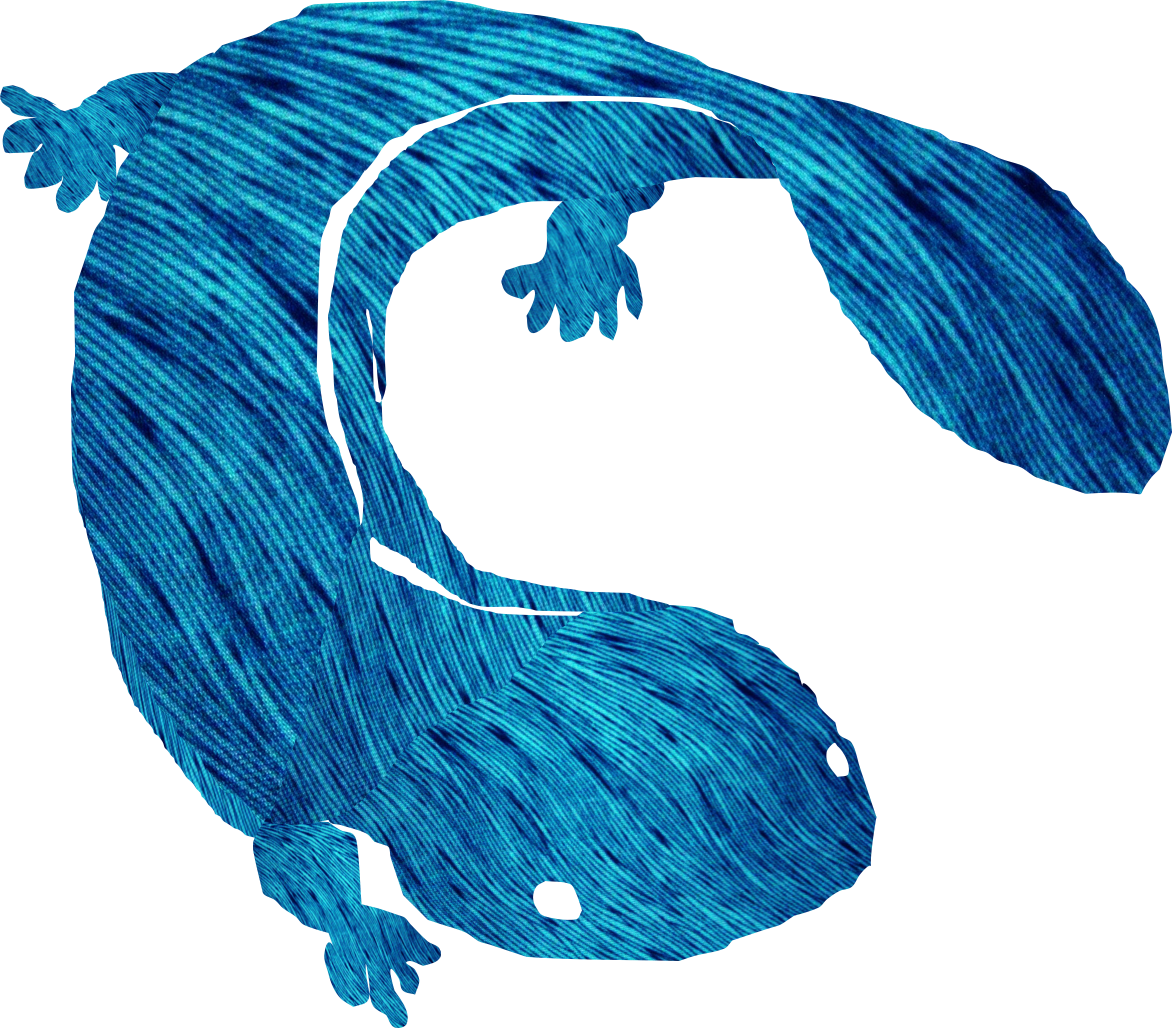
Honestly, there is no special significance in the name (laughter). Just that when I was writing my book, I thought it would be cute to have an iconic character representing my book. Coincidentally, I was taking a walk along Katsura River and came across a giant salamander bathing by the river.
Soon after getting back home, I looked up giant salamanders and learned that a number of giant salamanders inhabited in Kyoto, nonetheless, they are one of the rare species in Japan. Talking about which, if you may recall, the number of clinical biostatisticians is also fairly low in Japan. The two distinctive characteristics of giant salamanders, their rareness and uniqueness to Kyoto, coincidentally represented the essence of my book, so I've decided on the name "Dr. Giant Salamander."
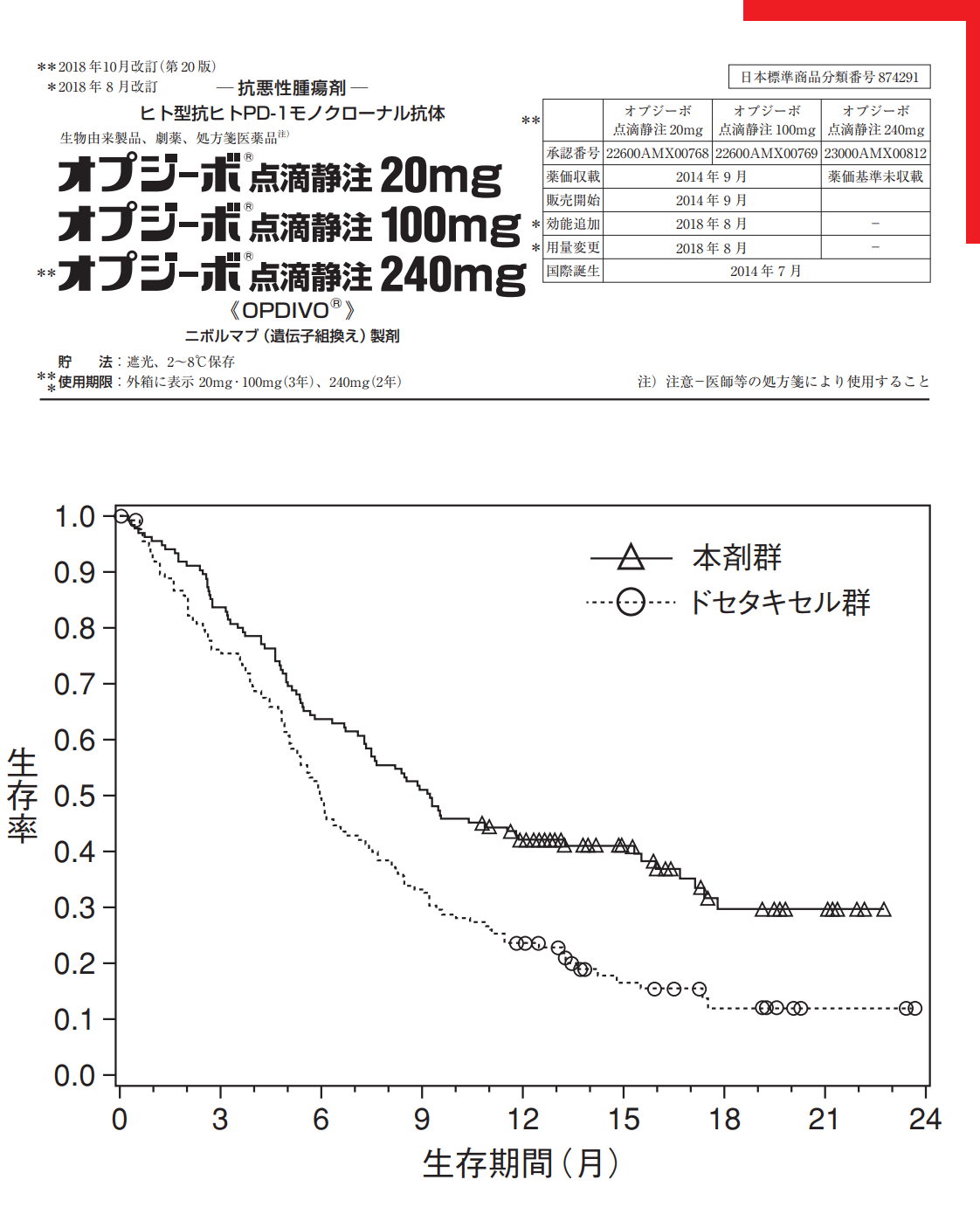
The package insert of anti-tumor medicine "Opdivo" and its clinical data that led to approval. Statistics plays
a key role in medical breakthroughs.In public outreach activities, people quite often shy away from the term "statistics" alone. For this particular reason, the iconic "giant salamander" character advertises the field of study to the lay public in a friendly way. He is, in a sense, a "yuru-chara" (everyone's favorite and laid-back mascot) (laughter). Without a twist, there shall not be any progress made, so I teach the importance of statistics in medical science by showcasing precedent success cases such as Professor Shinya Yamanaka (Kyoto University)'s Nobel Prize-winning iPS cell research, and Dr. Tasuku Honjo, another Nobel Prize winner in Physiology or Medicine whose ground-breaking research on PD-1 and an anti-tumor medicine "Opdivo." In both cases, clinical trials on human subjects were undertaken, where clinical biostatisticians were involved. Overall, writing books and providing online courses on OCW and KoALA are part of my outreach efforts to promote statistics to those who are not yet familiar with what statistics can offer to their lives.
I see. You need to fine-tune what you teach, depending on to whom you are teaching.
Exactly. First, there is a subject to teach. If by any chance it addresses social needs in the modern era, I feel the urge to put myself in my students' shoes and tailor teaching style to their needs. I am always aware of the immense impacts of university faculty members' remarks on society. All the more so, we university faculty members should take responsibility for providing a quality education, which is not randomly selected but is well planned and organized.
You do see the world from a broader perspective, and hold a burning aspiration (laughter).
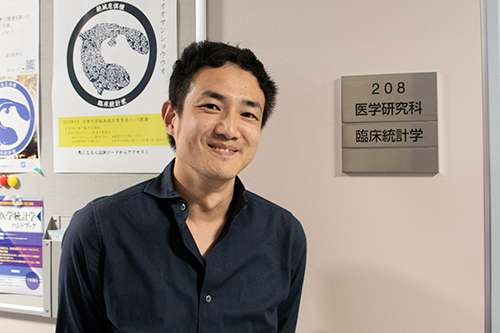
Dr. Tanaka sharing his goal of training a number of clinical biostatistians in the years to come. Behind him is his Clinical Biostatistics Laboratory. In the flyer on the bulletin board, everyone's favorite "yuru-chara," Dr. Giant Salamander, is printed.
I'm not that ambitious (laughter). Generally, we are prone to stay in the comfort zone of our lives. As for me, by taking advantage of teaching at university, my teaching philosophy emphasizes the joy of learning something new and of feeling the grand scale of their learning experiences. Without these tricks, students won't stay focused, nor research won't go anywhere from where it is now. Innovative ideas and academic freedom are two essential components of university education and research.
That could be well linked to what constitutes "Kyoto University-likeliness" after all. Thank you for your time.
Questions asked by: Mana Taguchi
Article composition: Wataru Kono
Photography: Takeo Suzuki
Interview date: October 17, 2018
Published online: December 26, 2018 (Original article)
January 10, 2019 (English article)
